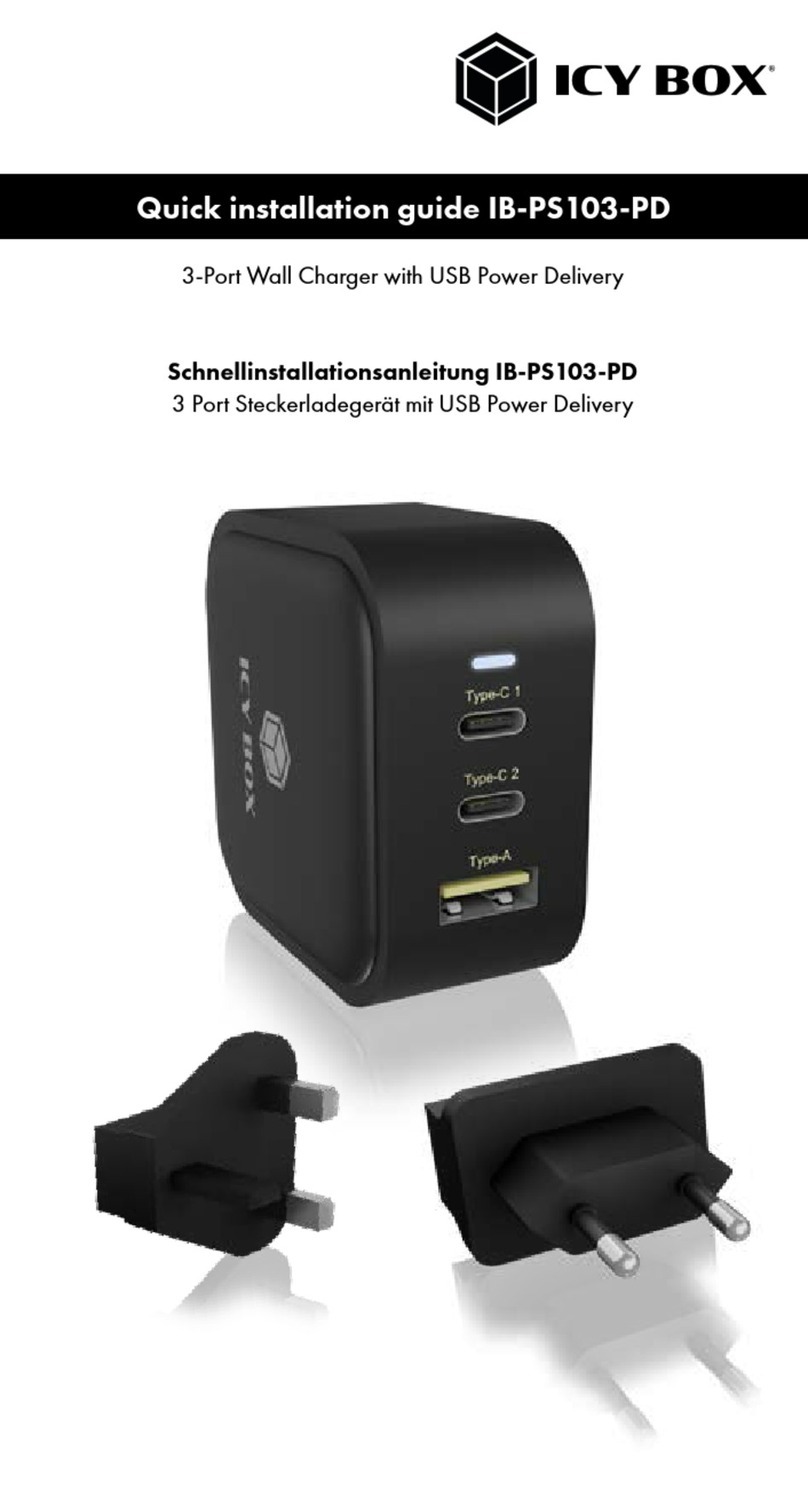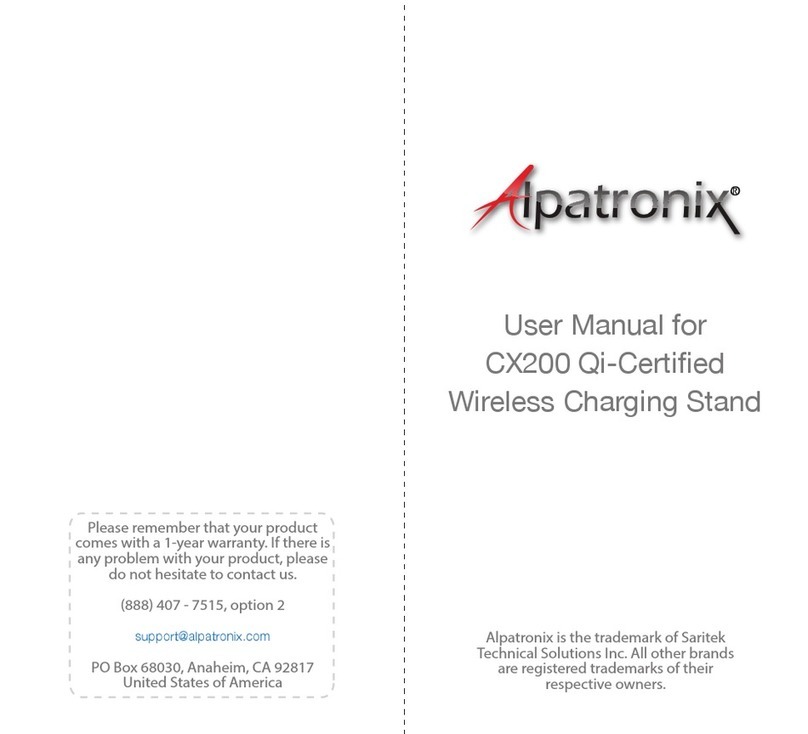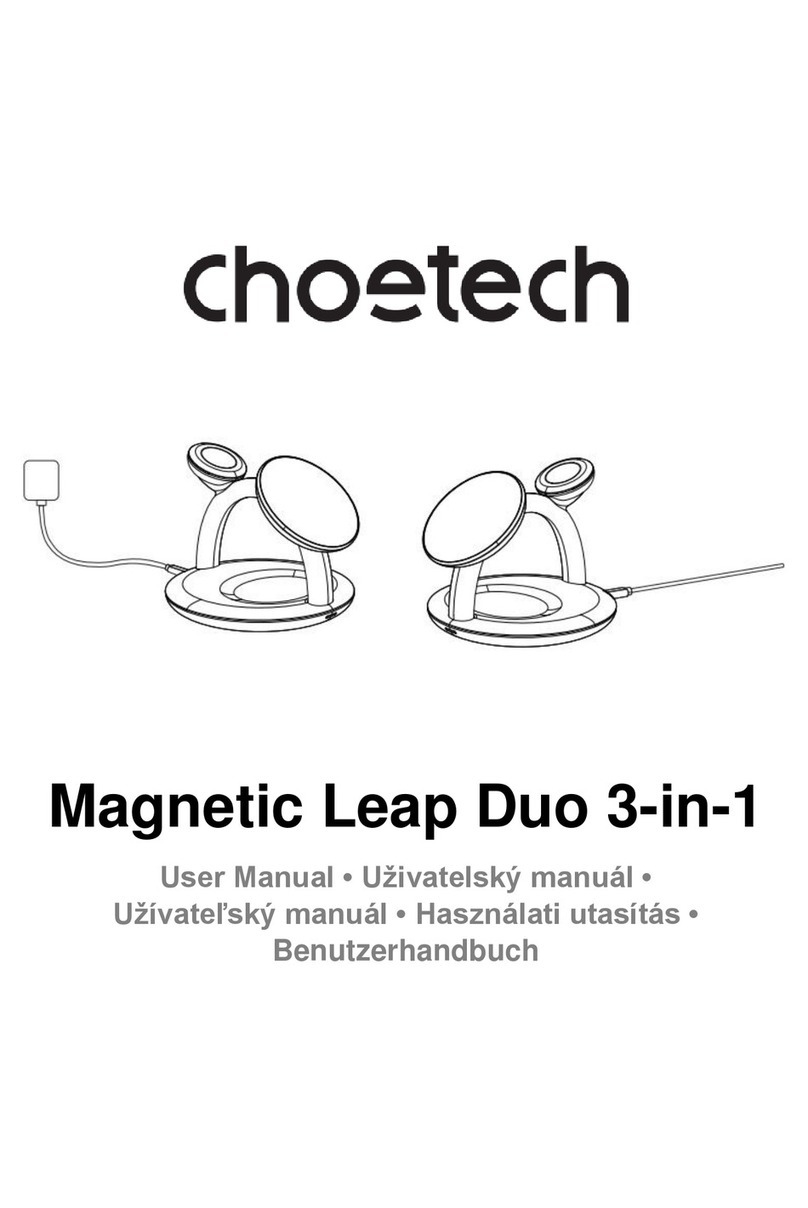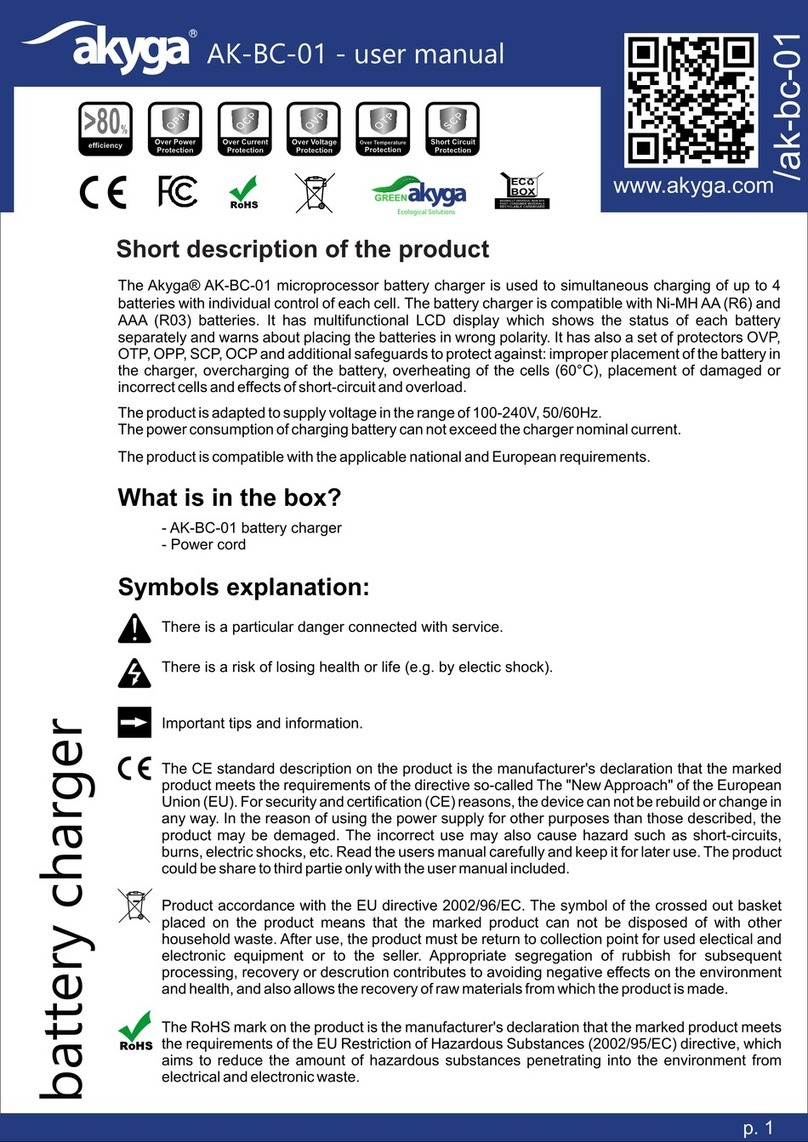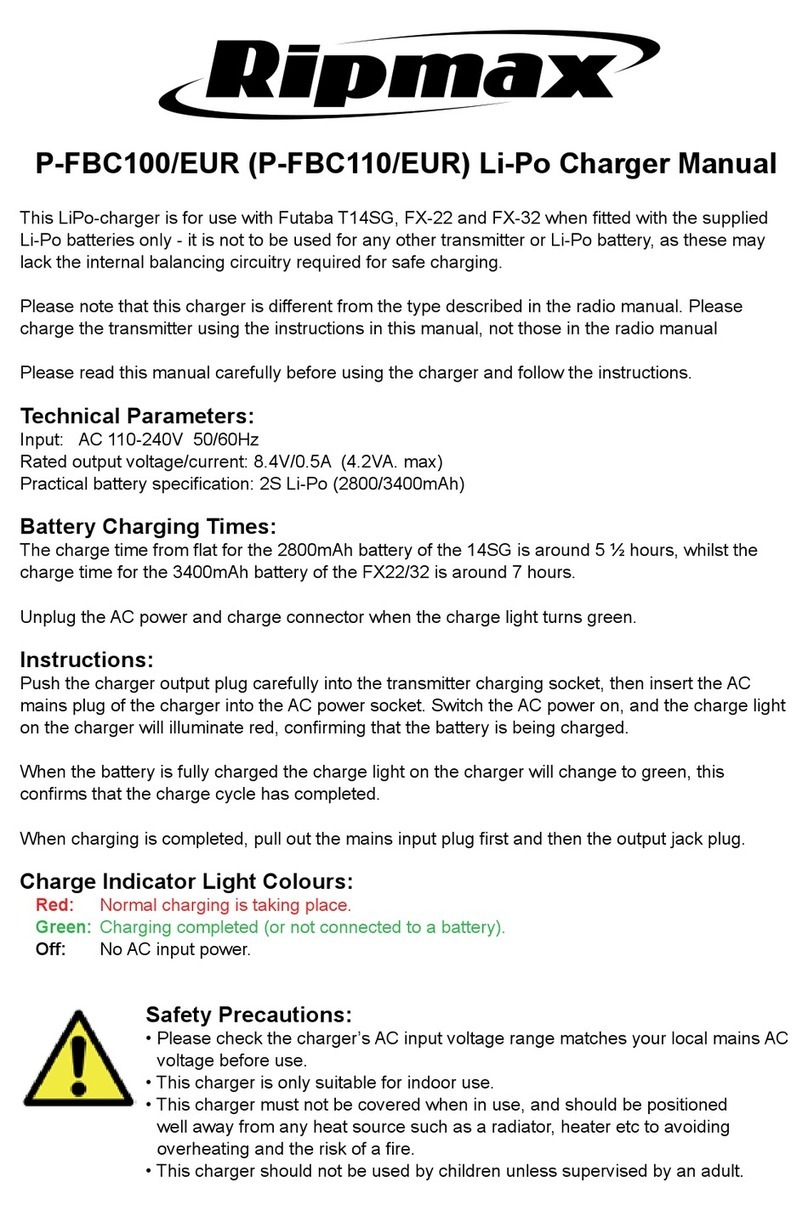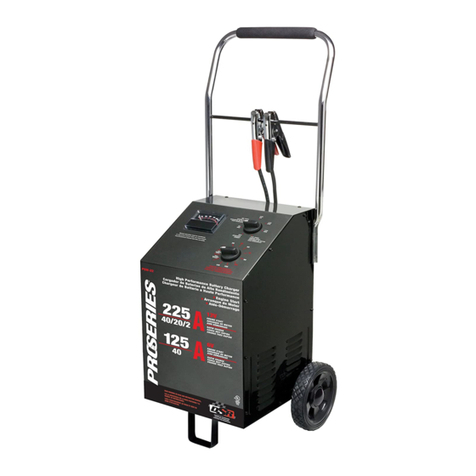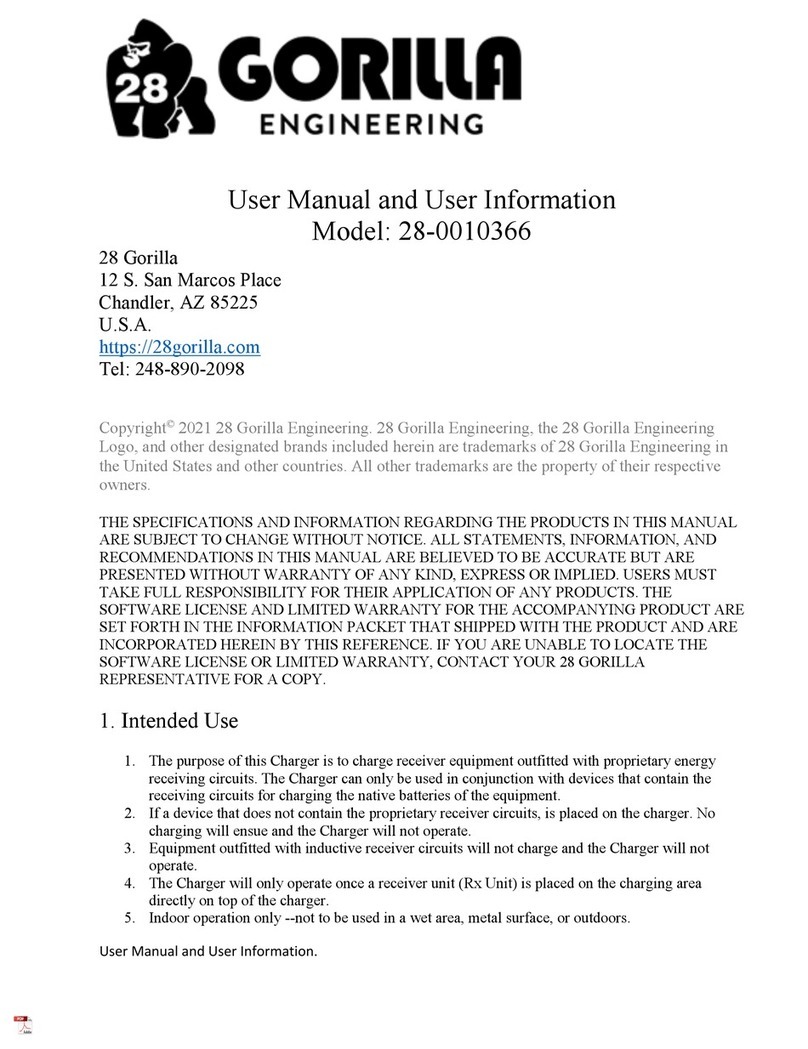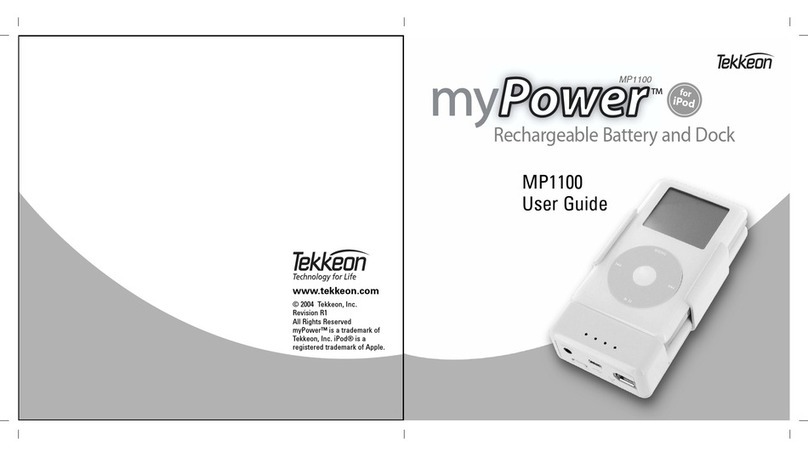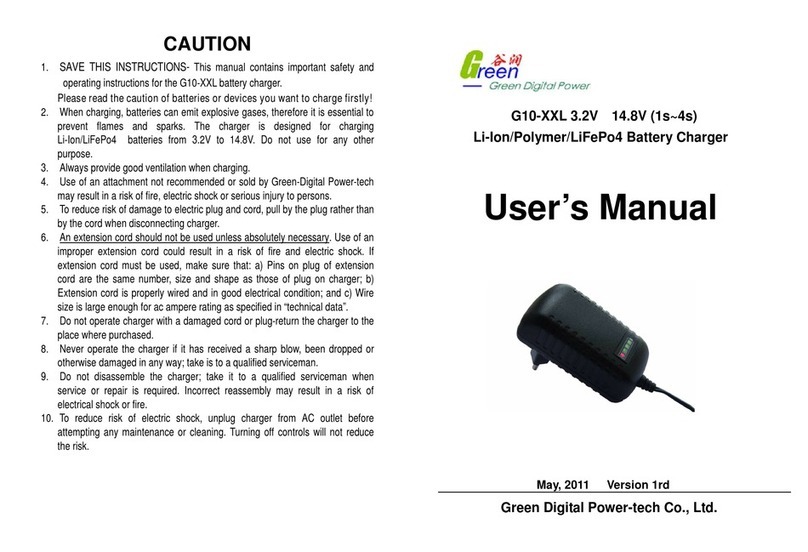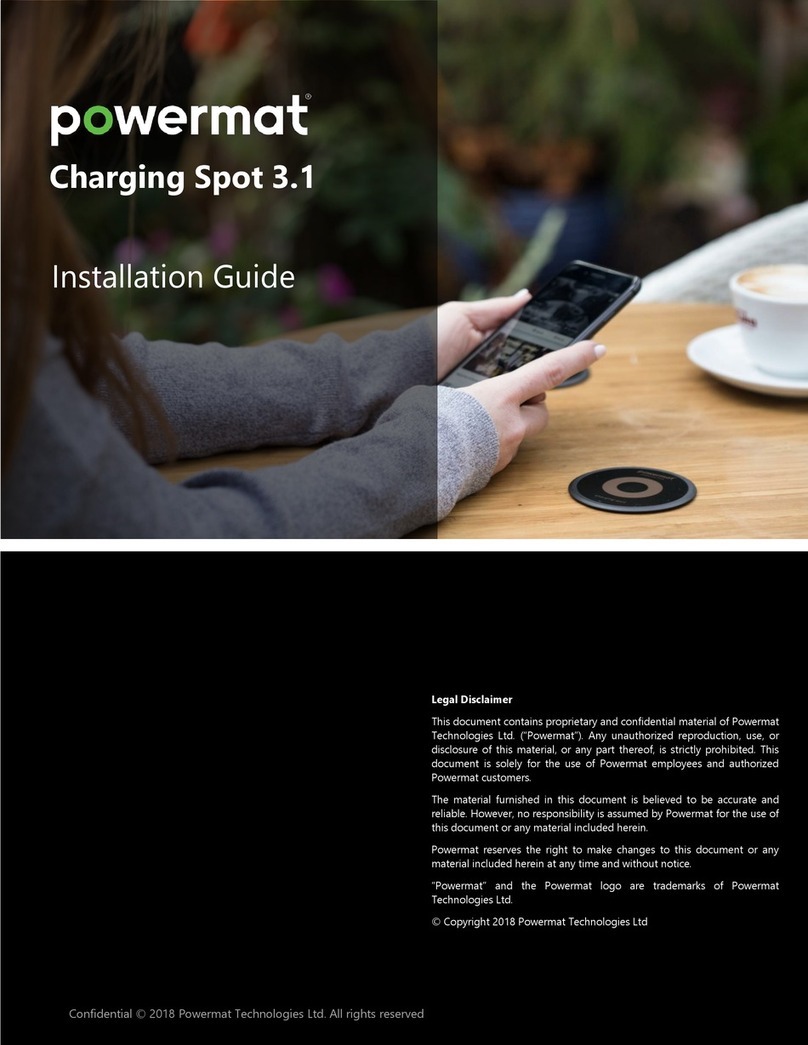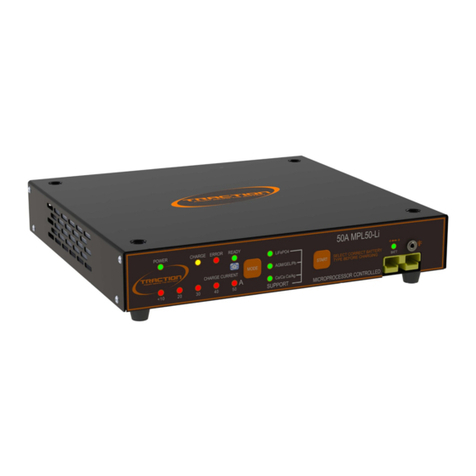
Refer to https://www.tractioncharger.com/ for the latest instructions 5404-MAN-001-EN-01
1.13. Have a damaged cord or plug replaced
immediately.
1.14. Do not expose the unit to rain or snow. Use the
charger in a dry area.
1.15. Risk of explosive gasses. Batteries generate
explosive gasses. Charge the battery in a well-
ventilated area. Do not overcharge the battery.
1.16. This equipment is for use in a commercial or
industrial environment only.
1.17. This equipment is NOT suitable for use in
locations where children are likely to be
present.
2. Personal Precautions
2.1. Warning – California Proposition 65.
Battery port and related items contain lead and
lead compounds, chemicals known to the state
of California to cause cancer and birth defects of
other reproductive harm. Wash hands after
handling.
2.2. Wear complete eye protection, clothing
protection, and wear rubber soled shoes. Place
damp cloth over battery to protect against acid
spray. When ground is very wet or covered with
snow, wear rubber boots. Avoid touching eyes
while working near battery.
2.3. If battery acid contacts skin or clothing, wash
immediately with soap and water. If acid enters
the eye, immediately flush with cold running
water for at least 10 minutes and seek medical
attention. Have plenty of fresh water and soap
nearby in case battery acid contacts skin,
clothing or eyes
2.4. Always have someone within range of your
voice, or close enough to come to your aid,
when working around flooded batteries.
2.5. NEVER smoke or allow a spark or flame near a
battery or engine.
2.6. Before working with a flooded battery, remove
personal metal items such as rings, bracelets,
necklaces, watches, etc. A flooded battery can
produce a short circuit current high enough to
weld such items causing a severe burn.
2.7. Be extra cautious to reduce risk of dropping a
metal tool onto the battery. It might spark or
short circuit the battery or other electrical part
that may cause an explosion.
3. Charging a Battery.
3.1. Be sure the area around the battery is well
ventilated while the battery is being charged.
Gas can be forcefully blown away by using a
piece of cardboard or other non-metallic
material as a fan.
3.2. If it is necessary to remove the battery from
vehicle to charge it, always remove the
grounded terminal from the battery first. Make
sure all accessories in the vehicle are off, so as
not to cause an arc.
3.3. Study all battery manufacturer's specific
precautions such as removing or not removing
cell caps while charging and recommended
rates of charge.
3.4. Add distilled water in each cell until the battery
acid reaches the level specified by the
manufacturer. This helps purge excessive gas
from the cells. Do not overfill. For a battery
without caps, carefully follow the
manufacturer's recharging instructions
3.5. Make sure that the charger output voltage and
battery type is correct for the battery voltage
and battery type you wish to charge.
3.6. Clean the battery terminals. Be careful to keep
corrosion from coming into contact with your
eyes.
4. Grounding and AC Power Cord Connection.
4.1. The charger must be grounded to reduce risk of
electric shock. The charger is equipped with an
electric cord having an equipment grounding
conductor and a grounding plug. The plug must
be plugged into an outlet that is properly
installed and grounded in accordance with all
local codes and ordinances.
DANGER
Hazardous voltage.
An improper connection can result in electric
shock








